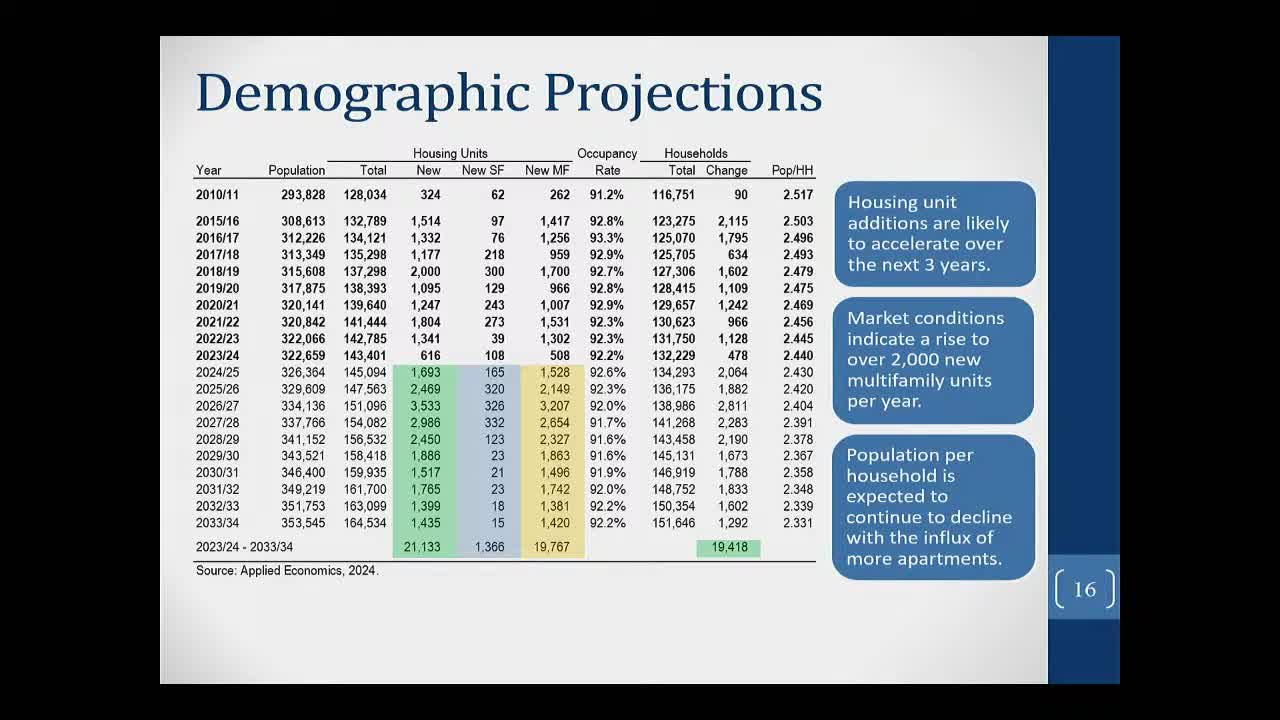District projects enrollment drop of 3,000 students over next decade
April 18, 2024 | Tempe Union High School District (4287), School Districts, Arizona

This article was created by AI summarizing key points discussed. AI makes mistakes, so for full details and context, please refer to the video of the full meeting. Please report any errors so we can fix them. Report an error »

In a recent meeting of the Tempe Union High School District (TUHSD) Governing Board, officials gathered to discuss pressing enrollment challenges facing the district. As the sun set over the district's schools, the atmosphere was charged with concern over declining student numbers and the implications for future planning.
The meeting revealed a stark projection: over the next decade, the district anticipates a significant drop in school-aged residents, with estimates suggesting a decrease of approximately 1,100 students. This decline is attributed to a combination of factors, including an aging population and low birth rates, which are not being offset by the anticipated addition of 19,000 new households in the area.
Currently, the district serves about 9,695 students, which represents a service rate of 71% of the school-aged population living within its boundaries. This figure has seen a troubling decline from 80% in 2010, highlighting the increasing competition from alternative educational options, including charter and private schools. The board discussed the importance of retaining current students, as maintaining the service rate could mitigate further losses.
The projections indicate that if current trends continue, enrollment could plummet to around 9,400 students in the next ten years, a drop of nearly 3,000 students. This scenario paints a challenging picture for the district, which is grappling with high housing prices and interest rates that further complicate the situation.
In examining specific schools, the board noted varying enrollment patterns. For instance, Tempe High School has seen improvements in retaining local students, while McClintock High School has successfully attracted a significant number of students from outside its attendance area. This trend underscores the complexity of student enrollment, where geographic residence does not always dictate school choice.
As the meeting concluded, board members were left with a sense of urgency to address these enrollment challenges. The discussions highlighted the need for strategic planning and community engagement to ensure that the district can adapt to these demographic shifts and continue to provide quality education for its students. The future of TUHSD hangs in the balance, as officials seek to navigate the intricate landscape of educational choices and community needs.
The meeting revealed a stark projection: over the next decade, the district anticipates a significant drop in school-aged residents, with estimates suggesting a decrease of approximately 1,100 students. This decline is attributed to a combination of factors, including an aging population and low birth rates, which are not being offset by the anticipated addition of 19,000 new households in the area.
Currently, the district serves about 9,695 students, which represents a service rate of 71% of the school-aged population living within its boundaries. This figure has seen a troubling decline from 80% in 2010, highlighting the increasing competition from alternative educational options, including charter and private schools. The board discussed the importance of retaining current students, as maintaining the service rate could mitigate further losses.
The projections indicate that if current trends continue, enrollment could plummet to around 9,400 students in the next ten years, a drop of nearly 3,000 students. This scenario paints a challenging picture for the district, which is grappling with high housing prices and interest rates that further complicate the situation.
In examining specific schools, the board noted varying enrollment patterns. For instance, Tempe High School has seen improvements in retaining local students, while McClintock High School has successfully attracted a significant number of students from outside its attendance area. This trend underscores the complexity of student enrollment, where geographic residence does not always dictate school choice.
As the meeting concluded, board members were left with a sense of urgency to address these enrollment challenges. The discussions highlighted the need for strategic planning and community engagement to ensure that the district can adapt to these demographic shifts and continue to provide quality education for its students. The future of TUHSD hangs in the balance, as officials seek to navigate the intricate landscape of educational choices and community needs.
View full meeting
This article is based on a recent meeting—watch the full video and explore the complete transcript for deeper insights into the discussion.
View full meeting
